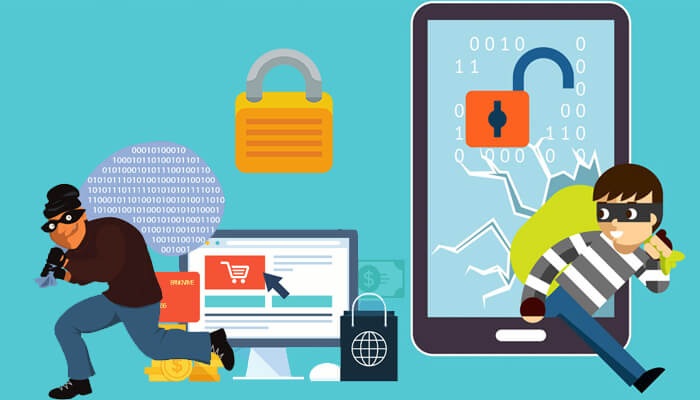Online purchases of goods and services are now much simpler and more practical thanks to e-commerce, which has altered how people shop. Online buying is becoming increasingly common, but there is also a higher risk of e-commerce frauds.
Comprehending the various e-commerce fraud schemes to safeguard your company and clients from monetary and other harm is crucial. We outline the significant dangers to e-commerce companies in this post.
Here are Five Different Types of E-Commerce Fraud That You Need to be Aware of:
Identity Theft:
In online shopping, identity theft is the illegal use of a person’s personal information, such as name, address, Social Security number, or financial information, to make purchases, start new accounts, or apply for loans or other benefits in their name.
Identity theft can happen in an e-commerce environment when a criminal gains access to a person’s data through phishing scams, data breaches, or online account hacking. The cyberthief then uses the person’s online account to make transactions or access private financial data.
It’s possible for e-commerce identity theft victims to go unnoticed until they receive purchase invoices they did not authorize or until the illicit use of their information lowers their credit score. Individuals can suffer financial losses as a result of the thief’s acts.
People should safeguard their personal information to avoid identity theft by using secure passwords, exercising caution when disclosing personal information online, and routinely checking their financial accounts for any unusual activity.
Payment Fraud:
Payment fraud is the illegal use of a person’s payment information, such as a credit card number or bank account information, to make fictitious online purchases. The perpetrator and the merchants involved in the fraud may suffer considerable financial losses due to this scheme. A prime example of this type of fraud is carding assaults (to learn how to protect yourself from carding attacks, read this guide).
People should exercise caution when entering their payment information online by using secure websites and encryption to prevent payment fraud. Also, they should routinely check their financial accounts for any unusual activity. Businesses should also put robust security measures in place to safeguard the financial information of their clients, such as secure payment systems, encryption, and fraud prevention technologies.
Counterfeit Goods:
False or imitation goods are products marketed and sold as genuine, high-quality goods. Consumers find these products intriguing because they are frequently intended to resemble well-known, high-end brands and are offered at a discount from comparable authentic goods.
Due to the harm, they cause to customers and reliable firms, these manufactured goods pose a severe issue for e-commerce. When consumers buy counterfeit goods, they frequently receive defective goods that fall short of their expectations and may even be dangerous to their health and safety. Additionally, the selling of fake items can compromise the integrity of the brands they represent and the profitability and reputation of legitimate firms.
Phishing Scams:
Phishing is the term for bogus emails, texts, or websites created to fool people into divulging critical information like login passwords, credit card numbers, or personal information. The attacker then gathers data to steal money, steal someone else’s identity, or access accounts without authorization.
Phishing scams frequently take on the persona of a reliable company or financial institution, such as a bank or an online retailer. They might contain confidential information request pop-up windows or links to phony websites. Due to the attacker’s efforts to make the hoax appear as convincing as possible, these scams can be challenging to spot.
Businesses may protect their customers by establishing robust security mechanisms, such as encryption and multi-factor authentication, and by educating customers about the potential risks of common phishing scams. To recognize and stop phishing assaults, businesses can also use anti-phishing tools and services.
Return Fraud:
Return fraud is deliberately sending back products that were either never bought in the first place or were believed to make a profit. For e-commerce companies, this fraud may mean substantial financial losses and reputational and consumer satisfaction damage.
E-commerce enterprises should have strict return rules and procedures, such as requesting evidence of purchase, watching return trends, and confirming the authenticity of returned goods, to prevent return fraud. They can also trace and verify returned items using technology such as barcode scanning.
In Conclusion
E-commerce fraud is a problem that is getting worse and needs to be addressed with a thorough and proactive strategy. Online fraud detection and prevention technologies powered by AI have been successful. These solutions can assist e-commerce businesses in spotting unusual or suspicious activity, validating customer data, and supplying numerous security layers to safeguard critical data.
Using these technologies and other best practices can considerably decrease the risk of e-commerce fraud, protecting both businesses and customers. It is crucial to the future of online shopping.
Also read: How to add a text field to a Google Documents
Also read: All You Need to Know About IPTV



